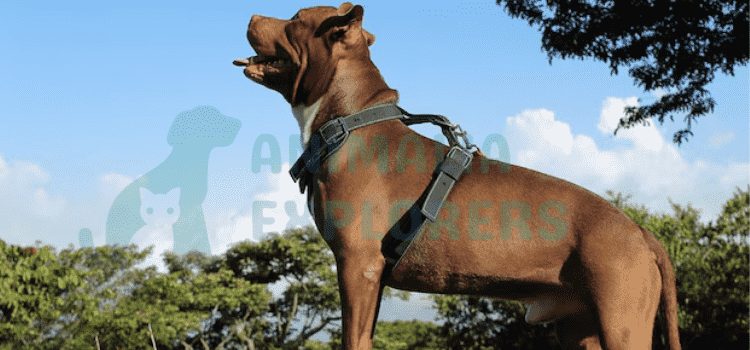Can a dog be allergic to a collar? Truth Revealed!

Can a dog be allergic to a collar?
Are you noticing rashes, redness, or other signs of allergies on your pup’s skin? It can be worrisome to see your beloved pet having reactions like this and it’s natural to want to understand the cause. One common concern is whether a dog can have an allergic reaction to their collar. We’ll tackle this question in detail in this blog post so you know how to take the best care of your canine companion.
Understanding what allergies are and how they can affect your pet
As much as we want our furry friends to be comfortable in their skin, allergies can make that difficult. Just like humans, dogs can develop allergies to a variety of things, including their collars. It might seem surprising, but the materials in the collar or the cleaning products used on it could trigger an allergic reaction in your pet. Symptoms of an allergic reaction include itching, redness, swelling, and even infection. If you suspect that your dog is allergic to their collar, it’s important to remove the collar and bring them to the vet for proper diagnosis and treatment. Understanding and addressing your pet’s allergies can make a huge difference in their well-being and overall quality of life. Examining the types of materials used to make collars that may cause an allergic reaction is the first step in preventing allergic reactions for your pet.
Hypoallergenic materials and alternative options
If you have determined that your dog is indeed allergic to their collar, it may be time to switch to a hypoallergenic option. The most common material used in collars is nylon, which can cause irritation and discomfort for sensitive dogs.
Examining the types of materials used to make collars that may cause an allergic reaction

Dog owners often invest in collars to keep their pets safe and secure. However, some may not realize that the materials used in certain dog collars can cause allergic reactions in their furry friends. Collars made from leather, nylon, or metal hardware, for example, can trigger an allergic response in dogs due to the presence of chemicals or dyes. It’s important for dog owners to be aware of the types of collars their pets wear and to closely monitor their pet’s behavior for any signs of discomfort or distress. By choosing collars made from hypoallergenic materials, such as cotton or hemp collars, pet owners can help prevent allergic reactions and keep their four-legged companions healthy and happy.
Signs to look for that may indicate your dog has an allergy to their collar
As a loving pup parent, you want to make sure your furry friend is comfortable, happy, and healthy. However, did you know that your dog’s collar could be causing them allergies? It’s not uncommon for dogs to develop skin irritations or rashes due to an allergy to their collar. Some signs to look out for include excessive scratching or rubbing, redness, and swelling around the neck area. If you notice any of these symptoms, it may be time to consider switching to a hypoallergenic dog collar for your puppy. Investing in a collar made from natural materials can help prevent allergies and ensure your furry friend is comfortable at all times.
Further Examination of Signs Indicating a Collar Allergy in Dogs

Becoming familiar with the signs of a possible collar allergy can be paramount in ensuring the comfort and health of your dog. The key is to pay close attention to changes in your dog’s behavior and physical appearance.
Excessive Scratching or Rubbing: One of the most noticeable signs is excessive scratching or rubbing. This goes beyond the normal scratching that dogs do. If your pet is constantly scratching or rubbing the area around their neck, or trying to get under the collar with their paws, it’s a clear indication that something is bothering them.
Redness and Swelling: Redness, swelling, or even sores around the neck area where the collar comes in contact with the skin are definite signs of an allergic reaction. The skin in this area might also feel warmer than the skin in other parts of the body.
Hair Loss: Hair loss around the neck area or where the collar sits can also occur. The constant scratching can lead to this, or it could be a direct result of the allergic reaction.
Behavioral Changes: Lastly, behavioral changes can be a sign of discomfort. If your dog seems more lethargic or irritable, or if they are eating less, the discomfort from the allergic reaction could be the cause.
If you observe any of these signs, it’s crucial to remove the collar immediately and seek veterinary advice. Your vet can provide a proper diagnosis and treatment plan, which might include switching to a hypoallergenic collar. Remember, the wellbeing of our furry friends is our responsibility, so always be observant and proactive in attending to their needs.
Causes of Allergy in Dogs
Allergies are a common issue among dogs of all breeds and sizes, but did you know that the type of collar your furry friend wears could be a contributing factor? Many dogs are sensitive to the fabrics and materials used in collars, particularly those with synthetic fibers or those treated with chemicals. This is a common problem among smaller dogs, whose thinner skin is more susceptible to irritation. Even if your dog has worn the same collar for years without issue, allergies can develop over time. Choosing a dog collar made from natural materials, such as leather or hemp, can help reduce the risk of allergic reactions and keep your pup happy and healthy.
Signs & Symptoms of an Allergic Reaction in Dogs
Dogs are some of the most loyal and loving companions we could ever ask for. Just like humans, however, they too can experience allergies that can cause discomfort and even serious health issues if left untreated. When buying a dog collar, it’s important to keep in mind that their skin is very sensitive, so make sure to opt for a hypoallergenic material such as nylon or leather. But even with all precautions, sometimes allergic reactions can still occur. Watch out for signs such as itchiness, redness, swelling, hives, and in severe cases, vomiting or difficulty breathing. If you notice any of these symptoms in your furry friend, it’s important to visit the vet right away. With proper care and attention, we can help our four-legged friends live a happy and healthy life.
More Signs & Symptoms of an Allergic Reaction in Dogs
- Constant Scratching or Licking: An allergic reaction to a collar can lead to your dog constantly scratching at their neck or excessively licking the area, in an attempt to soothe the irritation.
- Changes in Skin Color: Look for changes in the color of your dog’s skin, especially around the neck area. An allergic reaction can cause the skin to turn red, pink, or even a darker color.
- Bumps or Pimples: If you notice bumps or pimples on your dog’s skin, particularly around the neck, it could be a sign of an allergic reaction.
- Changes in Coat Quality: Allergies can lead to changes in your dog’s coat quality, such as thinning hair or a dull appearance.
- Unusual Odor: If your dog gives off an unusual odor, it could be due to a skin infection caused by an allergic reaction.
- Ear Infections: Dogs with skin allergies often suffer from recurring ear infections, so check your dog’s ears for redness, foul odor, or unusual discharge.
If you notice any of these symptoms, it’s crucial to consult with your vet immediately. They will be able to properly diagnose the cause of the symptoms and recommend a suitable treatment plan, which may include swapping the offending collar for a hypoallergenic alternative.
Types of Collars That Might Cause an Allergic Reaction

It might come as a surprise, but can a dog be allergic to a collar? The answer is yes. Collars often contain materials that can cause allergic reactions in some dogs. Most commonly, dogs can be allergic to collars made from leather, nylon, or plastic. Symptoms can range from mild skin irritation to severe itching, redness, and inflammation. It is important for pet owners to pay attention to their dog’s behavior after they begin using a new collar and to consider switching to a hypoallergenic collar if they suspect an allergy. While collar allergies are not common, it is always better to take precautions to ensure your furry friends are comfortable and healthy.
Collars That Could Cause an Allergic Reaction
- Nylon Collars: Although nylon is durable and affordable, some dogs can have a negative reaction to this synthetic material, leading to skin irritation and allergies.
- Leather Collars: While leather is a natural material, it is often treated with chemicals during the tanning process which can trigger allergic reactions in sensitive dogs.
- Plastic Collars: Plastic collars, especially those made from PVC or those containing phthalates, can sometimes cause skin irritation and allergies in dogs.
- Metal Collars: Dogs with sensitive skin can react to certain metals, such as nickel, used in some dog collars.
- Rubber Collars: Similar to plastic, rubber is a synthetic material that can potentially cause allergic reactions in some dogs.
- Collars with Dyes or Colorants: The dyes used to color dog collars can cause allergic reactions, especially if they contain synthetic chemicals.
- Collars with fragrance or insecticide: Some collars contain added fragrances or insecticides to repel pests, and these additional chemicals can be a potent allergen for some dogs.
Diagnosis & Treatment Options to Consider
When it comes to diagnosing and treating your furry friend, there are various options to consider. A common diagnosis tool is a dog collar that can monitor vital signs and behavior. It can provide valuable information on your dog’s overall health, allowing for early detection and timely treatment of any issues. Once a diagnosis is made, there are also several treatment options available depending on the underlying condition. These may include medications, surgery, physical therapy, or even alternative therapies like acupuncture. It’s important to work closely with your veterinarian to find the best course of action for your beloved pet, ensuring they receive the best care possible.
Ways to test if your dog is allergic to his/her collar, such as a patch test

If you’ve been using a dog collar for training and you suspect that your furry friend might be allergic to it, it’s important to determine the cause so that you can address it. One way to test if your dog is allergic to his/her collar is through a patch test. This involves placing a small piece of the collar material on your dog’s skin and checking for any signs of a reaction. Some common symptoms of a collar allergy include skin rash, itching, and redness. It’s always best to speak to your veterinarian before conducting this type of test, as they can guide the best way to proceed and any alternative options that may be available.
Natural alternatives to using synthetic fabric collars
Are you looking for a more natural alternative to synthetic fabric collars for your furry best friend? Luckily, there are a few great options out there that can keep your dog’s neck comfortable and stylish. One option is a collar made from hemp or bamboo, both of which are sustainable materials that are gentle on the environment. Another option is a leather collar, which can be treated with natural oils to keep it supple and long-lasting. You could even consider a collar made from recycled materials like bicycle inner tubes or repurposed seat belts. With so many natural options available, why not switch up your pup’s collar game and go eco-friendly?
Tips for reducing the risk of allergies for dogs, including proper cleaning and occasional breaks from wearing a collar
As a dog owner, you want to keep your furry friend as healthy as possible. One area to pay attention to is reducing the risk of allergies for dogs. There are several tips you can follow to help alleviate allergy-related symptoms, such as frequent bathing, vacuuming, and keeping your home dust-free. Another way to reduce the risk of allergies for dogs is to periodically take off their collar for a few hours to give their skin a break from any potential irritation. Taking preventative steps can help your pup live a happier, healthier life.
FAQs
Can a dog be allergic to a metal collar?
Yes, dogs can indeed be allergic to certain metals. Nickel is a common allergen for dogs, and it’s often used in metal collars. If your dog is allergic to metal, a hypoallergenic, non-metal collar would be a better choice.
How can I tell if my dog is allergic to his collar?
Signs of a collar allergy in dogs can include skin redness, itching, and rashes around the neck area where the collar sits. If your dog is frequently scratching, chewing, or rubbing at their neck after you’ve put on a new collar, they might be having an allergic reaction to it.
What materials are best for dogs with collar allergies?
Collars made from hypoallergenic materials like cotton, hemp, or bamboo are often a good choice for dogs with collar allergies. These materials are gentle on the skin and less likely to cause a reaction.
How often should I clean my dog’s collar?
It’s good practice to clean your dog’s collar at least once a month. Regular cleaning can help remove allergens and bacteria that may irritate your dog’s skin.
Should I stop using a collar if my dog has a collar allergy?
If your dog is having an allergic reaction to a collar, it’s crucial to remove it and consult with your vet. They may recommend switching to a hypoallergenic collar or using a harness instead.
Conclusion
As we reach the end of our journey, it’s time to reflect on our experiences and draw conclusions. This is an important step in any endeavor, whether it’s a school project or a business plan. By analyzing what we’ve learned and the results we’ve achieved, we can improve our future performance. This is also a chance to celebrate our successes and figure out how to overcome any obstacles we face. Remember, the conclusion is not the end, but rather the beginning of a new adventure. So, let’s take what we’ve learned and use it to propel us forward toward our next goal.







